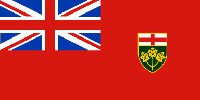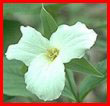Good Evening! Hope you Had A Good Day!
Exodus Twenty Five
by Dr. Henry M. Morris
(taken from the Defender's Study Bible)
Exodus 25:1 And the LORD spake unto Moses, saying,
the Lord spake. Many sections of Exodus, including these instructions for the design, construction and use of the tabernacle, were given verbatim by God direct to Moses. Merely as a sampling, note the assertions in Exodus 20:1; 20:22; 24:1; etc. In fact, the entire section from Exodus 25-31 was given by direct dictation. Note also that “Moses wrote all the words of the Lord” (Exodus 24:4).
Exodus 25:2 Speak unto the children of Israel, that they bring me an offering: of every man that giveth it willingly with his heart ye shall take my offering.
Exodus 25:3 And this is the offering which ye shall take of them; gold, and silver, and brass,
Exodus 25:4 And blue, and purple, and scarlet, and fine linen, and goats' hair,
Exodus 25:5 And rams' skins dyed red, and badgers' skins, and shittim wood,
Exodus 25:6 Oil for the light, spices for anointing oil, and for sweet incense,
Exodus 25:7 Onyx stones, and stones to be set in the ephod, and in the breastplate.
Exodus 25:8 And let them make me a sanctuary; that I may dwell among them.
I may dwell. Instead of the prohibited images representing a “god,” the true God provides a symbolic dwelling where He can dwell with His people, a type of the coming Holy City (Revelation 21:1-3).
Exodus 25:9 According to all that I show thee, after the pattern of the tabernacle, and the pattern of all the instruments thereof, even so shall ye make it.
Exodus 25:10 And they shall make an ark of shittim wood: two cubits and a half shall be the length thereof, and a cubit and a half the breadth thereof, and a cubit and a half the height thereof.
make an ark. This is the third “ark: mentioned in scripture. However, the first two—Noah's of wood, and baby Moses' ark of bulrushes—both were from the same Hebrew word; a word meaning simply “box.” This ark, on the other hand, is represented by a Hebrew word meaning “chest” or “coffin.” It was first used in Genesis 50:26, referring to the placing of Joseph's body in a “coffin” in Egypt. The second use of the word is right here. This Ark of the Covenant (assuming the Hebrew cubit to be eighteen inches) was forty-five inches long, twenty-seven inches wide, and twenty-seven inches deep. In it were to be placed the two tables of the law which Moses would receive directly from God on Mount Sinai (Exodus 25:16). Thus it was to be called both “the ark of the testimony” (Exodus 25:22) and “the ark of the covenant of the Lord” (Numbers 10:33).
shittim wood. This was probably “acacia” wood.
Exodus 25:11 And thou shalt overlay it with pure gold, within and without shalt thou overlay it, and shalt make upon it a crown of gold round about.
Exodus 25:12 And thou shalt cast four rings of gold for it, and put them in the four corners thereof; and two rings shall be in the one side of it, and two rings in the other side of it.
Exodus 25:13 And thou shalt make staves of shittim wood, and overlay them with gold.
Exodus 25:14 And thou shalt put the staves into the rings by the sides of the ark, that the ark may be borne with them.
Exodus 25:15 The staves shall be in the rings of the ark: they shall not be taken from it.
Exodus 25:16 And thou shalt put into the ark the testimony which I shall give thee.
Exodus 25:17 And thou shalt make a mercy seat of pure gold: two cubits and a half shall be the length thereof, and a cubit and a half the breadth thereof.
make a mercy seat. The mercy seat was a “seat” only in the sense that it was, in effect, God's throne when He would meet with His people. It served as a covering for the ark and also was where the sacrificial blood was sprinkled on the Day of Atonement (Leviticus 16:14, 15). In the New Testament, the word for “mercyseat” (Hebrews 9:5) is the same word translated “propitiation” (xTerm 2:2; 4:10).
Exodus 25:18 And thou shalt make two cherubims of gold, of beaten work shalt thou make them, in the two ends of the mercy seat.
two cherubims. This command does not conflict with God's commandment not to “make unto thee any graven image” (Exodus 20:4). The key phrase is “unto thee,” meaning, “to make as an object of worship.
Exodus 25:19 And make one cherub on the one end, and the other cherub on the other end: even of the mercy seat shall ye make the cherubims on the two ends thereof.
Exodus 25:20 And the cherubims shall stretch forth their wings on high, covering the mercy seat with their wings, and their faces shall look one to another; toward the mercy seat shall the faces of the cherubims be.
Exodus 25:21 And thou shalt put the mercy seat above upon the ark; and in the ark thou shalt put the testimony that I shall give thee.
Exodus 25:22 And there I will meet with thee, and I will commune with thee from above the mercy seat, from between the two cherubims which are upon the ark of the testimony, of all things which I will give thee in commandment unto the children of Israel.
ark of the testimony. The ark was a chest containing God's “testimony,” the tables of the law. The “mercy seat” covering it was seen as a throne upon which God, seated between the cherubim, would meet with His people.
Exodus 25:23 Thou shalt also make a table of shittim wood: two cubits shall be the length thereof, and a cubit the breadth thereof, and a cubit and a half the height thereof.
make a table. This table was to be the “pure table” (Leviticus 24:6) on which the “shewbread” would be placed each Sabbath.
Exodus 25:24 And thou shalt overlay it with pure gold, and make thereto a crown of gold round about.
Exodus 25:25 And thou shalt make unto it a border of an hand breadth round about, and thou shalt make a golden crown to the border thereof round about.
Exodus 25:26 And thou shalt make for it four rings of gold, and put the rings in the four corners that are on the four feet thereof.
Exodus 25:27 Over against the border shall the rings be for places of the staves to bear the table.
Exodus 25:28 And thou shalt make the staves of shittim wood, and overlay them with gold, that the table may be borne with them.
Exodus 25:29 And thou shalt make the dishes thereof, and spoons thereof, and covers thereof, and bowls thereof, to cover withal: of pure gold shalt thou make them.
Exodus 25:30 And thou shalt set upon the table showbread before me alway.
Exodus 25:31 And thou shalt make a candlestick of pure gold: of beaten work shall the candlestick be made: his shaft, and his branches, his bowls, his knops, and his flowers, shall be of the same.
make a candlestick. The golden candlestick ( Hebrew menorah), or lamp stand, both provided light in the tabernacle and symbolized the divine light in which God dwells and which, through Christ, we follow as “the light of the world” (John 8:12).
knops. That is, “knobs” or rounded protuberances.
Exodus 25:32 And six branches shall come out of the sides of it; three branches of the candlestick out of the one side, and three branches of the candlestick out of the other side:
Exodus 25:33 Three bowls made like unto almonds, with a knop and a flower in one branch; and three bowls made like almonds in the other branch, with a knop and a flower: so in the six branches that come out of the candlestick.
Exodus 25:34 And in the candlestick shall be four bowls made like unto almonds, with their knops and their flowers.
Exodus 25:35 And there shall be a knop under two branches of the same, and a knop under two branches of the same, and a knop under two branches of the same, according to the six branches that proceed out of the candlestick.
Exodus 25:36 Their knops and their branches shall be of the same: all it shall be one beaten work of pure gold.
Exodus 25:37 And thou shalt make the seven lamps thereof: and they shall light the lamps thereof, that they may give light over against it.
Exodus 25:38 And the tongs thereof, and the snuffdishes thereof, shall be of pure gold.
Exodus 25:39 Of a talent of pure gold shall he make it, with all these vessels.
Exodus 25:40 And look that thou make them after their pattern, which was showed thee in the mount.
after their pattern. The details of the design and building of this very temporary dwelling of God, the wilderness tabernacle, occupies most of thirteen chapters of Exodus, indicating the importance of its symbology. Some of the latter is explained in the book of Hebrews (especially Hebrews 8 and 9). The tabernacle was actually to be a model of God's “true tabernacle, which the Lord pitched, and not man” (Hebrews 8:2), where God will dwell with His people forever (Revelation 21:3). At that time, no doubt, we shall comprehend the full meaning of all its beauties.

